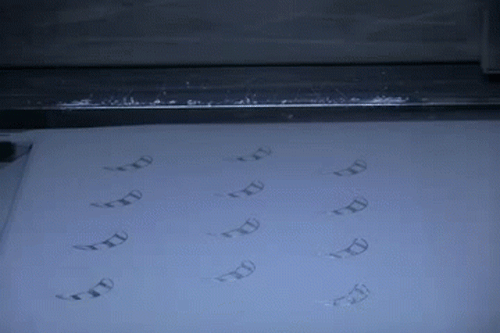Todd Rockstroh has spent the last decade on manufacturing’s vanguard, using lasers to “print” nozzles and other complex jet engine parts from bits of superalloy dust. Despite enormous progress, this process, which is called 3-D printing, remains a tricky terrain. Rockstroh, who is a laser processing expert at GE Aviation in Cincinnati, Ohio, has been working to eliminate as many unknowns as possible, starting with the material. “When we designed the nozzle, we wanted to make it from an alloy that was mature, well known and thoroughly tested, nothing exotic,” he says.
He found it inside the human body. Rockstroh and his team looked at various materials suitable for 3-D printing and settled on cobalt-chromium alloys that have been used for decades for joint replacements and dental implants. These alloys are light, tough and corrosion resistant. Conveniently, they can also operate in temperatures as high as 1,800 degrees Fahrenheit, and are relatively cheap. “Because of their medical applications, there has been a tremendous amount of research done on these alloys,” Rockstroh says. “They are also pretty common because they serve such a large market, which makes them cheaper.”
Artificial knees are solid, however, and Rockstroh and his team needed powdered metal. The team fanned out to search for specialty smelters. They found several who could turn molten alloys into powder through gas atomization, mechanical milling, spray forming and other advanced methods.
Engineers at GE aviation use alloys developed for artificial joints to 3-D print jet engine parts. But doctors have also started looking at the technology to print replacement body parts.
The powder arrives at the GE Aviation plant in 15 to 30 pound containers. “It’s smaller than a pitcher of water,” Rockstroh says. The team sifts the powder to make sure they have right particle size and empty three to six containers in a tub sitting on top of the 3-D printer, called direct metal laser melting machine, DMLM.
A computer that holds a file with a digital drawing of the nozzle guides the DMLM machine’s high-powered fiber optic laser across the powder bed like a painter moves a brush across the canvas. The laser then fuses successive layers of powder each 20 microns thick to the desired shape.
The process can take as long as 120 hours and the workers use big data analytics to monitor everything from the size of the weld pool, temperature and the stability of the laser. The new nozzle is 25 percent lighter and as much as five times more durable than the current nozzle made from 20 different parts.
Jet engine parts have never been so hip.





